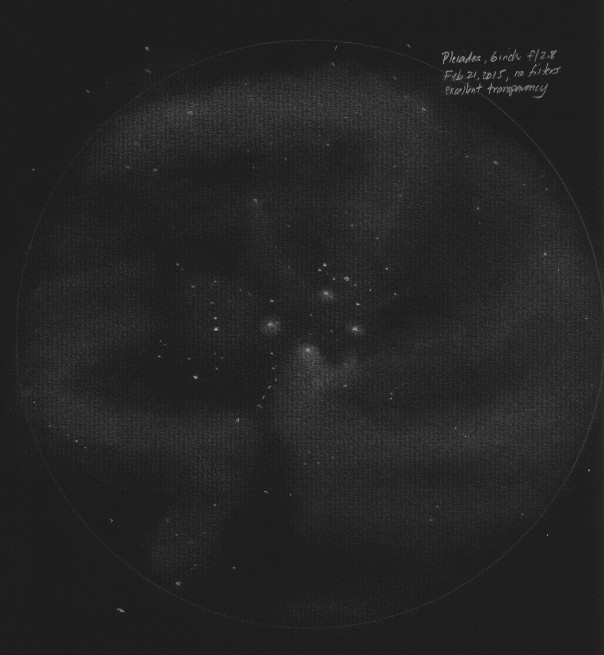
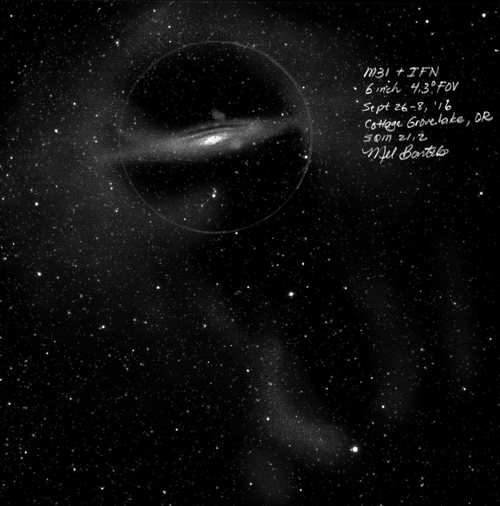
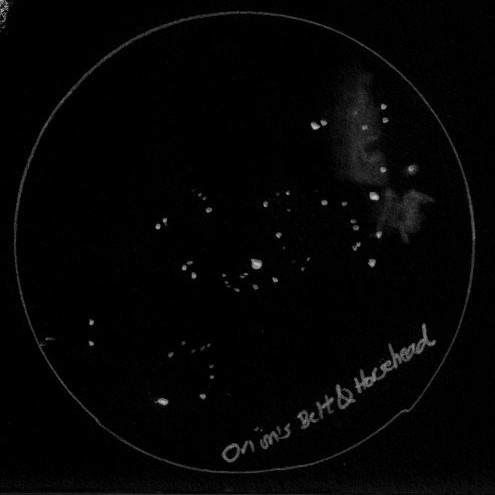


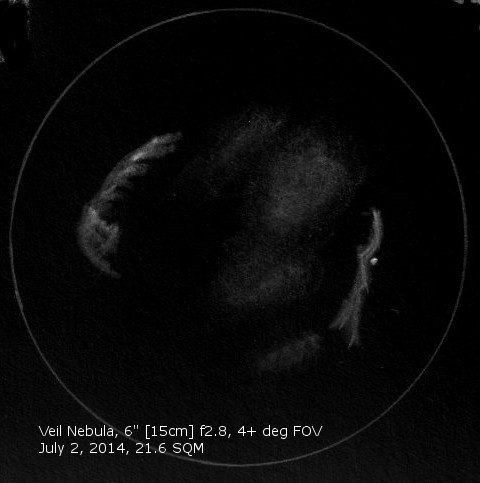

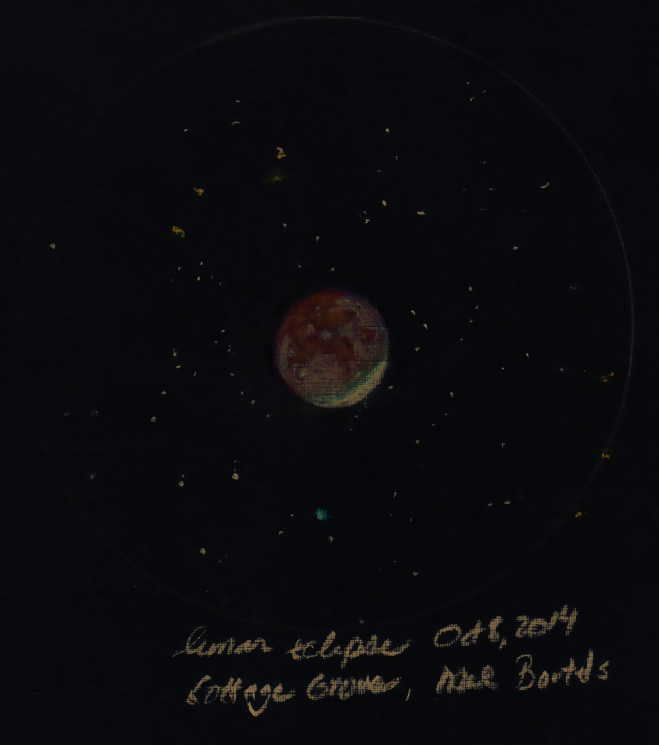
| Combination of aperture and field of view |
Visual sketches of IFN; see common objects in a larger composition. |
| F2.8 primary |
Make it yourself. If you have a couple of mirrors under your belt, then this should not be out of reach. |
| Light throughput compared to refractor |
Equivalent unobstructed aperture is 5.5 inches (6 inches aperture / refractor throuhput of 95% * enhanced coating 96% primary * enhanced coating 96% secondary * 0.94 (aperture reduction due to 1/3 diagonal obstruction)) |
| Field curvature caused by short focal length |
Not an issue at 17 inches focal length. |
| Contrast |
The contrast appears exception under dark skies. |
| Central obstruction due to relatively large secondary mirror |
The central obstruction ratio between the diagonal and primary mirrors is about one-third (2.1 inch diagonal), which causes optical quality to drop by about 1/6 wavefront. |
| Coma corrector intrustion into the light path. |
The P2 corrector in my 13 inch f/3.0 intrudes 1/4 that of the diagonal's obstruction (1.5% of the overall light available). The 6 inch's intrusion is 1/2 that of the diagonal obstruction (or 7% of the overall light). This does not affect observations. For more on my thoughts, read this. |
| Vignetting caused by the coma corrector |
Another concern is vignetting caused by the P2's barrel. Slightly defocusing the star's image into a disc and moving it around the field, I tested for and found no vignetting caused by the bottom of the coma corrector. |
| Optical alignment |
Optical alignment proved no more challenging than my 13.2 inch f3.0 scope. A good laser collimator and very accurately centered notebook ring on the primary proved sufficient. The alignment cannot sag or change at all (maximum deviation is a fraction of a mm) as the scope is moved from a horizontal to a vertical direction. |
| Focusing |
Requires an precision focuser able to position the eyepiece to better than 0.001 inches. |
| Exit pupil thoughts |
How to test for exit pupil without ruining dark adaption and causing the pupil to shrink? I test by slightly defocusing the star image so that it forms a disc. Since I can see the mirror's edge, I know that my eye's pupil is not truncating the mirror's aperture. I must place my eye exactly at the correct location centered and above the eyepiece using the rubber eyeguard. I also use the 17mm Ethos with its 3+ degree field of view at slightly higher power where my eye doesn't need to stay exactly centered. The 21mm Ethos eyepiece with this scope gives an exit pupil of 6.4mm. My eye opens to this size. But what would be the consequences if my exit pupil were smaller? If my eye opened only to 6mm then that's equivalent to stopping down the aperture to 5.6 inches, or a drop of about 10% illumination or about 0.1 magnitude. And keep in mind that both the object and the sky background are equally affected, leaving the ratio between the two or the contrast the same. I've not been able to observe this difference. Aperture is an important consideration seting the overall size and weight of the telescope. Field of view is equally important. Try considering field of view first. With this approach you determine the aperture based on the lowest power eyepiece in combination with your eye's pupil, giving the widest possible field of view. This makes the eye the limitation, not aperture, not field of view. That's as good as it gets. |